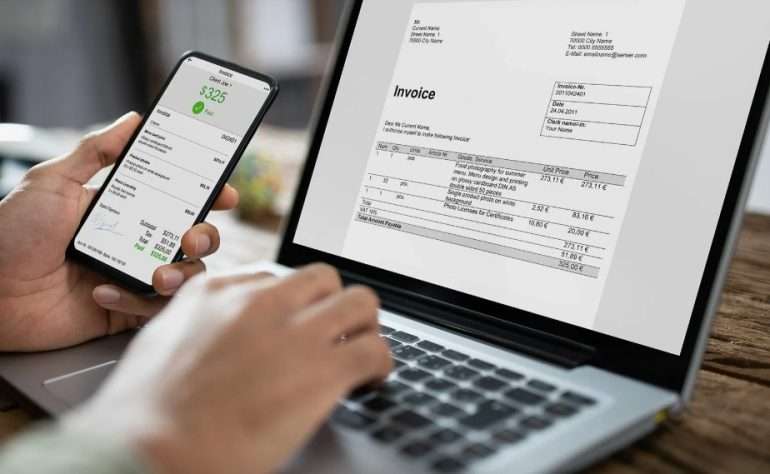The hospitality industry is constantly evolving, embracing new technologies to enhance customer experiences and streamline operations․ One of the most intriguing recent developments is the introduction of robotic receptionists․ Hilton Hotels has taken a bold step into the future by deploying “Connie,” a robot powered by IBM’s Watson artificial intelligence․ This innovative approach promises to revolutionize the way guests interact with hotels, providing personalized assistance and valuable information at their fingertips․ Connie represents a significant leap forward in the application of AI within the service sector․
What is Connie?
Connie is a humanoid robot designed to act as a concierge and information provider within Hilton hotels․ Unlike traditional receptionists, Connie leverages the power of IBM Watson to understand natural language, learn from interactions, and provide relevant answers to guest inquiries․ She can answer questions about hotel amenities, local attractions, dining options, and more․
How Does Connie Work?
Connie’s functionality is based on a sophisticated blend of hardware and software․ Here’s a breakdown:
- IBM Watson: The core of Connie’s intelligence․ Watson provides natural language processing, allowing Connie to understand and respond to guest questions in a conversational manner․
- Sensors: Connie is equipped with various sensors to detect movement, recognize faces, and understand her surroundings․
- Voice Recognition: This technology enables Connie to accurately transcribe spoken requests․
- Touchscreen Interface: Guests can also interact with Connie through a touchscreen, providing an alternative method for accessing information․
Implementing robotic receptionists like Connie offers numerous advantages to hotels and their guests:
| Advantage | Description |
|---|---|
| Enhanced Customer Service | Connie provides instant, 24/7 access to information, reducing wait times and improving overall guest satisfaction․ |
| Personalized Recommendations | By learning from interactions, Connie can offer tailored recommendations based on guest preferences․ |
| Increased Efficiency | Connie can handle repetitive tasks, freeing up human staff to focus on more complex issues․ |
| Data Collection and Analysis | Connie gathers valuable data on guest inquiries, allowing hotels to identify trends and improve their services․ |
The introduction of Connie represents a significant step towards the widespread adoption of robotic receptionists in the hospitality industry․ As AI technology continues to advance, we can expect to see even more sophisticated robots capable of providing increasingly personalized and efficient service․ These robots could eventually handle a wider range of tasks, such as check-in/check-out, baggage handling, and even room service delivery․
- Multilingual Support: Robots capable of communicating in multiple languages will be essential for serving a global clientele․
- Emotional Intelligence: Future robots could be programmed to recognize and respond to human emotions, providing more empathetic and personalized service․
- Improved Mobility: Robots with enhanced mobility will be able to navigate hotels more easily, providing assistance to guests throughout the property․
Connie’s arrival signifies a significant shift in how hotels approach customer service․ By harnessing the power of AI and robotics, Hilton is paving the way for a future where technology plays an even greater role in enhancing the guest experience․ While robots like Connie will not completely replace human staff, they will undoubtedly become increasingly valuable assets, allowing hotels to provide more efficient, personalized, and memorable service․ The long-term impact of robotic receptionists remains to be seen, but the initial signs suggest that they are here to stay, transforming the hospitality landscape in profound ways․ This innovation also offers businesses the chance to see how AI can improve customer satisfaction․ Ultimately, the success of these robots will depend on their ability to seamlessly integrate into the existing hotel environment and provide genuine value to both guests and staff․
The hospitality industry is constantly evolving, embracing new technologies to enhance customer experiences and streamline operations․ One of the most intriguing recent developments is the introduction of robotic receptionists․ Hilton Hotels has taken a bold step into the future by deploying “Connie,” a robot powered by IBM’s Watson artificial intelligence․ This innovative approach promises to revolutionize the way guests interact with hotels, providing personalized assistance and valuable information at their fingertips․ Connie represents a significant leap forward in the application of AI within the service sector․
What is Connie?
Connie is a humanoid robot designed to act as a concierge and information provider within Hilton hotels․ Unlike traditional receptionists, Connie leverages the power of IBM Watson to understand natural language, learn from interactions, and provide relevant answers to guest inquiries․ She can answer questions about hotel amenities, local attractions, dining options, and more․
How Does Connie Work?
Connie’s functionality is based on a sophisticated blend of hardware and software․ Here’s a breakdown:
- IBM Watson: The core of Connie’s intelligence․ Watson provides natural language processing, allowing Connie to understand and respond to guest questions in a conversational manner․
- Sensors: Connie is equipped with various sensors to detect movement, recognize faces, and understand her surroundings․
- Voice Recognition: This technology enables Connie to accurately transcribe spoken requests․
- Touchscreen Interface: Guests can also interact with Connie through a touchscreen, providing an alternative method for accessing information․
Advantages of Using a Robotic Receptionist Like Connie
Implementing robotic receptionists like Connie offers numerous advantages to hotels and their guests:
| Advantage | Description |
|---|---|
| Enhanced Customer Service | Connie provides instant, 24/7 access to information, reducing wait times and improving overall guest satisfaction․ |
| Personalized Recommendations | By learning from interactions, Connie can offer tailored recommendations based on guest preferences․ |
| Increased Efficiency | Connie can handle repetitive tasks, freeing up human staff to focus on more complex issues․ |
| Data Collection and Analysis | Connie gathers valuable data on guest inquiries, allowing hotels to identify trends and improve their services․ |
The Future of Robotic Receptionists
The introduction of Connie represents a significant step towards the widespread adoption of robotic receptionists in the hospitality industry․ As AI technology continues to advance, we can expect to see even more sophisticated robots capable of providing increasingly personalized and efficient service․ These robots could eventually handle a wider range of tasks, such as check-in/check-out, baggage handling, and even room service delivery․
Potential Future Enhancements:
- Multilingual Support: Robots capable of communicating in multiple languages will be essential for serving a global clientele․
- Emotional Intelligence: Future robots could be programmed to recognize and respond to human emotions, providing more empathetic and personalized service․
- Improved Mobility: Robots with enhanced mobility will be able to navigate hotels more easily, providing assistance to guests throughout the property․
Connie’s arrival signifies a significant shift in how hotels approach customer service․ By harnessing the power of AI and robotics, Hilton is paving the way for a future where technology plays an even greater role in enhancing the guest experience․ While robots like Connie will not completely replace human staff, they will undoubtedly become increasingly valuable assets, allowing hotels to provide more efficient, personalized, and memorable service․ The long-term impact of robotic receptionists remains to be seen, but the initial signs suggest that they are here to stay, transforming the hospitality landscape in profound ways․ This innovation also offers businesses the chance to see how AI can improve customer satisfaction․ Ultimately, the success of these robots will depend on their ability to seamlessly integrate into the existing hotel environment and provide genuine value to both guests and staff․
Advice for Hotels Considering Robotic Receptionists
For hotels contemplating the integration of robotic receptionists into their operations, several crucial considerations should guide your decision-making process․ Remember, success lies not just in acquiring the technology, but in strategically implementing it to complement your existing services and enhance the guest experience․
Key Considerations Before Implementation:
- Define Clear Objectives: Before investing, articulate specific goals․ Do you aim to reduce staff workload, improve customer service response times, or gather data on guest preferences? Having defined goals will allow you to accurately measure success․
- Assess Infrastructure Readiness: Evaluate your existing IT infrastructure․ Does it have the bandwidth and security to support the robot’s connectivity and data processing needs? Upgrades may be necessary․
- Employee Training and Integration: Don’t neglect staff training․ Human employees need to understand how to work with the robot, not be replaced by it․ Clear roles and responsibilities are crucial․ Emphasize that the robot is a tool to help them provide better service, not a threat to their job security․
- Guest Acceptance and Accessibility: Consider the diverse needs of your guests․ Ensure the robot’s interface is intuitive and accessible to all, including those with disabilities․ Provide clear instructions on how to interact with the robot․
- Data Privacy and Security: Prioritize data privacy․ Be transparent with guests about what data the robot collects and how it’s used․ Implement robust security measures to protect sensitive information․ Comply with all applicable data privacy regulations․
Practical Implementation Tips:
- Start Small: Pilot the robot in a limited area or during specific hours․ This allows you to gather feedback and make adjustments before a full-scale rollout․
- Monitor Performance Closely: Track key metrics such as guest satisfaction, response times, and task completion rates․ Use this data to optimize the robot’s performance and identify areas for improvement․
- Gather Guest Feedback: Actively solicit feedback from guests on their experiences with the robot․ This can be done through surveys, in-person interviews, or online reviews․
- Maintain and Update Regularly: Like any technology, robotic receptionists require regular maintenance and software updates․ Ensure you have a plan in place for keeping the robot running smoothly and up-to-date․
- Be Prepared for Challenges: Expect the unexpected․ There will be glitches, misunderstandings, and technical issues․ Have a contingency plan in place to address these challenges promptly and effectively․
Remember, integrating a robotic receptionist is not a ‘plug-and-play’ solution․ It requires careful planning, thoughtful implementation, and ongoing monitoring․ By addressing these considerations proactively, you can maximize the benefits of this innovative technology and enhance the overall guest experience at your hotel․ A successful implementation hinges on viewing the robot as a collaborative partner, working alongside human staff to provide exceptional service․ Embrace the change, adapt to the challenges, and reap the rewards of this exciting technological advancement․ With proper planning and execution, robotic receptionists can become a valuable asset to your hotel, improving efficiency, enhancing customer satisfaction, and positioning you as a leader in the hospitality industry․ Consider carefully how a robotic receptionist fits into your overall business strategy and desired customer experience before making any final decisions․






